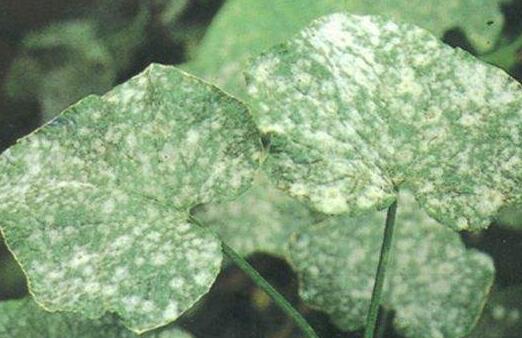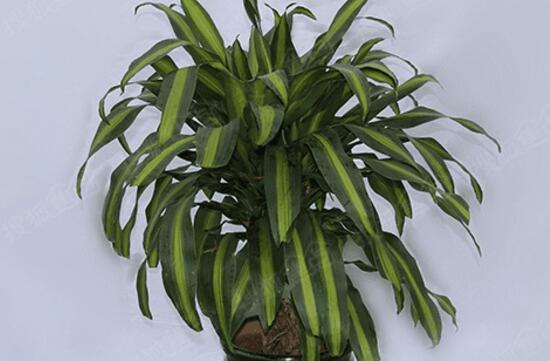Petunia pest control methods, virus disease / leaf spot disease / white mildew / prevention
Petunia itself is not prone to pests, but sometimes neglect maintenance causes it to be infected by diseases and insect pests, which not only causes flowers to wither ahead of time, but also makes plants grow slowly or even die. Among them, the more common diseases and insect pests are white mildew, leaf spot, virus disease and aphids. Let's learn about the prevention and control methods of petunia diseases and insect pests.
Prevention and control of petunia diseases and insect pests
1. White mildew

The main harm to the leaves of Petunia will cause irregular polygonal disease spots on the leaves, color, fragrance, light green, and then turn yellowish green, and there will be a lot of ear white spots on the back, which will wither and fall off the leaves in serious cases.
Prevention and control: White mildew is mainly caused by fungi, the condition of the disease is that the temperature is 25-30 degrees, the humidity is on the high side, etc., so it is necessary to avoid too high air humidity in the prevention and cure. At the same time, 50% carbendazim wettable powder 1500 times or 36% thiophanate methyl suspension 600 times 700 times.
2. Leaf spot
Like white mildew, the main harm is the leaves. At the onset of the disease, there are round disease spots on the leaves of Petunia at first, but then the disease spots will expand into irregular shapes, turning reddish brown to dark brown in color, grayish brown in the middle, and finally brown markings on petioles and stems.
Prevention and treatment: the cause of its disease is poor ventilation and excessive humidity, so it is usually necessary to ensure that the planting method of petunia is scientific, keep the environment well ventilated, and spray with 1000 times of Dysenamine after the disease.
3. Virus disease
It is caused by plant viruses parasitic on plants, and there are four manifestations during the disease, namely, mosaic type, etiolated type, necrotic type and deformed type. sometimes the virus can be parasitic on plants for several years, so it is difficult to prevent petunia diseases and insect pests.
Prevention and treatment: in order to avoid the occurrence of virus disease, it is necessary to choose varieties with strong disease resistance, and at the same time, we should also do a good job in disinfection of soil and roots. When the disease occurs, it can be sprayed with 1000 times of omethoate solution.
4. Aphids
Flower friends with many years of planting experience are no stranger to aphids, because it is one of the most widely distributed pests, although it is inconspicuous but harmful, it will cause leaf necrosis of petunia and other diseases, so it should be found and eliminated as soon as possible.
Prevention and control: when aphids are found, you need to remove some of them with a wet cloth or brush, and then spray drugs. The commonly used agents are 1000 times of omethoate emulsion, 1000 times of dichlorvos EC, etc., and usually do a good job of environmental hygiene.
Planting methods of Petunia Control of Diseases and insect pests of Petunia
Petunia is one of the most popular home decoration flowers, which can play a good role in embellishment and make the room full of vitality. Next, we will share with you the planting methods of petunia and the knowledge of petunia pest control.
The planting method of petunia:
1. Soil: soil that requires slightly acidic, loose, fertile and well-drained soil. Generally speaking, basin soil can be prepared with semi-uniform mixing of sandy loam and rotten leaf soil.
2. Fertilization: petunia has a long flowering period and needs continuous nutrition in order to blossom continuously. therefore, thin liquid fertilizer is generally applied every 10 days or so during the growth period, and more phosphate fertilizer should be applied during the budding period to facilitate colorful flowers.
3. Watering: watering should be appropriate at ordinary times to avoid being too dry or too wet. Over-dried plants are easy to wither, and too wet to rot roots. Summer weather is hot, evaporation is the largest, should be timely supplementary watering, to keep the basin soil moist without stagnant water, rainy season need timely drainage and waterlogging prevention.
4. Illumination: petunia is a long-day plant, which requires strong light conditions so that photosynthesis can be carried out smoothly. Therefore, sufficient light should be given to both potted and ground plants. If the sun is sufficient, the growth is strong, the leaves are luxuriant and the flowers are numerous; if the light is not enough, the branches and leaves are easy to grow, and the flowering quality is poor.
5. Temperature: petunia is the most suitable for seed germination at 20 ℃. The optimum temperature for its growth is 13-18 ℃, and the winter temperature is 4-10 ℃. If the temperature is lower than 4 ℃, the plant growth stops. It can withstand high temperature of more than 35 ℃ in summer.
6. Pruning: when the seedling grows to about 10 cm high, the heart is removed to promote its sprouting lateral branches, then bloom more. If there is no need to leave seeds after each flower fade, the residual flowers should be cut off in time, and the branches should be cut short, and the lateral branches can continue to germinate and blossom continuously.
Prevention and control of petunia diseases and insect pests
1. White mildew
Remove the diseased leaves in time after the onset of the disease, and spray 75% chlorothalonil 600 times 800 times at the initial stage of the disease.
2. Leaf spot
Try to avoid bruising leaves and pay attention to prevent wind damage, sunburn and frost injury; timely removal of diseased leaves and burning, pay attention to remove fallen leaves; spray 1000 times of Dysenamine solution.
3. Virus disease
The indirect control method is spraying insecticides to control aphids and spraying 1000 times omethoate solution. In the cultivation operation, tools and hands that have come into contact with diseased plants should be disinfected.
4. Aphids
When a large number of aphids are found, they should be isolated in time and sprayed with 1000 times of omethoate emulsion or 1000-1500 times of Mala sulfur emulsion or 1000 times of dichlorvos EC or 15000-20000 times of imidacloprid water dispersible granules.
Petunia pest control florist to help
Petunia is now used to beautify flowers and plants, and it is also the most popular home decoration plant, which has a good beautification effect in home windowsill, living room and other places, but the maintenance of petunia needs to be paid attention to in order to avoid diseases and insect pests. let's learn about the diseases and insect pests of petunia and how to solve them:
Disease and pest control of petunia:
Petunia white rust:
White rust mainly harmed the leaves, petioles and tender stems of Petunia. At the initial stage, the damaged leaves had light green spots on the leaves, then gradually turned into light yellow, and then expanded into large disease spots. In the later stage, a white scar appeared on the back of the disease part. When the tender stem was damaged, the flowers and stems were twisted. When the disease spot surrounded the petiole and tender shoots, the host parts above ring cutting grew poorly, shrunk and died. Solution: spraying 1% Bordeaux solution or 50% Phytophthora 500 times solution at the initial stage of the disease, spraying once every 10 to 15 days has a better control effect.
Petunia white mildew:
It mainly harms the leaves of petunia, which is mainly white spots in the initial stage, and it is easy to cause diseased leaves to fall off when it is serious. Solution: remove the diseased leaves in time after the onset of the disease, and spray 75% chlorothalonil 600 times 800 times at the initial stage of the disease.
Petunia leaf spot disease:
Leaf spot is also one of the main diseases of petunia, which mainly harms leaves and can also cause plant death in serious cases. Solution: remove the diseased leaves and burn them, pay attention to the removal of fallen leaves; spray 1000 times of Dysenamine.
Petunia virus disease:
Petunia virus disease is mainly characterized by slow plant growth, relatively weak, and yellowing of leaves. Solution: spray 40% omethoate 1000 times solution.
Aphids:
It is the most important pest of petunia, which mainly erodes the leaves and tender stems of petunia. Solution: when a large number of aphids are found, they should be isolated in time and sprayed with 1000 times of omethoate emulsion or 1000-1500 times of Mala sulfur emulsion or 1000 times of dichlorvos EC or 15000-20000 times of imidacloprid water dispersible granules.
Petunia is a relatively vigorous growth of flowers and plants, so we should also pay attention to conservation, so as to avoid travel diseases and insect pests infection, affect growth and reduce ornamental value, the above are a variety of petunia common diseases and insect pests and their solutions, I hope to help you.
- Prev

What should we do if the Brazilian wood grows worms? pest control of Brazilian wood / spraying of sugarcane moth
Brazilian wood, native to Guinea, has been planted in China in recent years because of its beautiful plant type and green leaves, and has gradually become the most popular foliage plant in modern times. However, because most of the flower lovers who raise Brazilian wood are novice, improper maintenance often occurs, resulting in the disease of plant worms.
- Next

How to plant gentian
How to plant gentian
Related
- Fuxing push coffee new agricultural production and marketing class: lack of small-scale processing plants
- Jujube rice field leisure farm deep ploughing Yilan for five years to create a space for organic food and play
- Nongyu Farm-A trial of organic papaya for brave women with advanced technology
- Four points for attention in the prevention and control of diseases and insect pests of edible fungi
- How to add nutrient solution to Edible Fungi
- Is there any good way to control edible fungus mites?
- Open Inoculation Technology of Edible Fungi
- Is there any clever way to use fertilizer for edible fungus in winter?
- What agents are used to kill the pathogens of edible fungi in the mushroom shed?
- Rapid drying of Edible Fungi

